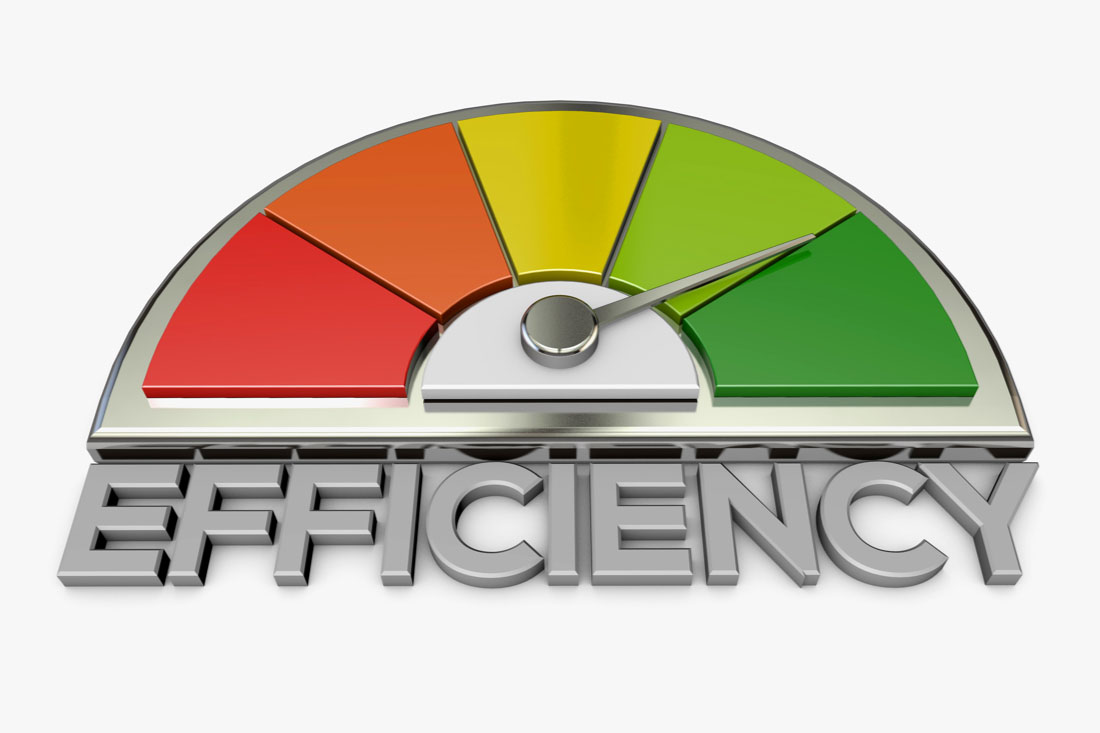Even before the COVID-19 pandemic forced employees to work from home, remote work was an established work policy at many companies. As lockdowns lifted and companies weighed the pros and cons of return-to-office (RTO) mandates, remote work evolved even further. Fast forward to today, and technological advancements and shifting employee expectations have redefined how professionals engage in their work environment. As a result, business leaders are still figuring out how to support remote employees, maximize productivity and promote work-life balance.
To help, let’s explore the latest trends — and the future of remote work — and what they mean for fostering a more engaged remote workforce in your organization.
Established remote work trends
Today, remote work is a highly sought-after work model, with over 95% of workers saying they want to work from home at least some of the time. Two-thirds also say it’s the most important aspect of a job. At the same time, Forbes reported remote employees are 35-40% more productive than in-office workers, likely due to better work-life balance and fewer distractions. The same report showed organizations are 21% more profitable when they go fully remote. To stay competitive and attract the best talent, leaders need to understand several important established remote work trends.
1. Hybrid models are here to stay (but they’re smarter now)
Hybrid work has moved from experiment to expectation. According to Gallup, 52% of employees in remote-capable roles work hybrid schedules, while only 21% work in offices full-time. But today’s hybrid models are more intentional, tailored by role, team and business need rather than a one-size-fits-all policy. Companies are optimizing for outcomes, not just presence. And they’re using it to gain a competitive advantage. Many workers say they’d trade salary for a flexible work arrangement, underscoring how offering flexible work helps attract and retain talent.
2. Outcome-based performance is replacing “time worked”
In recent years, leaders have finally discarded “butts-in-seats” as a productivity metric. Instead, outcome-based performance models anchored in deliverables and KPIs are becoming the standard. According to researchers who developed the results-oriented work environment (ROWE) framework, focusing on results instead of time tracking can increase productivity by 40% as employees choose to work when they’re most productive and enjoy their jobs more. Plus, outcome-based KPIs lead to stronger accountability among team members as employees know exactly what they’re responsible for. This approach is particularly helpful in remote settings, where managers need to trust employees are working even if they can’t see them in the office.
3. AI is augmenting workforce management
Artificial intelligence (AI) has exploded in workforce operations as organizations automate routine tasks and leverage AI for better analytics and modeling. SHRM reported in 2024 that human resources leaders use AI or automation for talent acquisition, learning and development and performance management. Among those using AI for performance management, 57% use it to help managers give better feedback to employees and 46% use it to help employees set goals. As employees leverage AI in their day-to-day work to boost productivity, leaders are tracking employee AI use to understand what tools employees use, how often they use them and how they can use them better. Remote-first workforces use AI to take notes on meetings, communicate more effectively with distributed team members, schedule events or meetings across time zones and help team members hit deadlines.
4. Culture is engineered, not just encouraged
Gone are the days of hoping company culture “just happens” organically. Today, organizations deliberately design remote culture as a measurable product. According to Gallup, organizations that prioritize employee engagement see a 17% increase in employee activity. This is especially important for distributed teams, where intentional guidelines ensure a culture that promotes productivity. By defining and building a strong remote work culture, organizations boost collaboration, increase productivity, enhance creativity and drive job satisfaction.
5. Coaching and development are remote-first
Performance coaching has moved from an annual event to a regular part of daily operations. Gartner predicts 70% of organizations will use online learning tools for employee development programs by 2027. With tools like ActivTrak, coaching is now ongoing, data-informed and remote by default. This approach boosts engagement while supporting employees in real time, not just during review cycles. Changing coaching and development practices to regular, digital-based models helps remote employees stay in touch with company goals and ensures all employees have access to the same opportunities.
6. Schedule adherence is a strategic metric
Schedule adherence today is less about micromanagement and more about insight. Smart leaders use this metric to gauge whether teams align with priorities — not to enforce rigid hours. ActivTrak has found schedule adherence enables proactive support, revealing barriers like context switching and overload before they impact outcomes. Remote employees may be tempted to fake their work hours with tricks like mouse jigglers or other tools. Schedule adherence tools remove this temptation and help keep employees accountable while building trust between employees and their supervisors to ensure goals are met. It’s about managing alignment, not just attendance.
7. Personalized wellness and learning programs are mainstream
To boost remote employee wellbeing, organizations are moving from uniform wellness perks to personalized programs. According to MantraCare, personalizing wellness programs can boost employee engagement by 60% and companies with personalized wellness experiences improve employee retention by 25%. Organizations today are scaling personalized programs that cater to different work styles and mental health needs. Tools like AI and workforce analytics make this possible by tailoring interventions and learning tracks to individual performance patterns and stress signals.
Emerging remote work trends for the coming years
The landscape continues to evolve, and leadership must closely monitor several emerging and future-facing trends in remote and hybrid work.
1. Virtual coworking and social spaces are growing
Virtual coworking is gaining momentum as teams seek connection outside of formal meetings. The global coworking market, including virtual platforms, was $22 billion in 2024 and is projected to surge to $25.1 billion in 2025. As physical spaces expand, so do their digital counterparts. Platforms replicating “online presence” are evolving to foster camaraderie, combat isolation and mimic the spontaneous interactions people who work from home miss.
2. Work from anywhere (WFA) infrastructure
As an emerging form of the remote work environment, the work from anywhere (WFA) approach is reshaping policy and infrastructure. Companies with WFA policies increase their talent pool to global proportions while providing team members with much-desired freedom and flexibility. To do this successfully, organizations must invest in global WiFi and IT support, timezone-aware collaboration tools and international compliance protocols to support a nomadic workforce. Remote work monitoring tools like ActivTrak give leaders metrics on how their employees get work done, no matter where they’re located, so they can make confident decisions about the future of their workforce.
3. Digital ergonomics and home office subsidies
In 2024, 56% of surveyed organizations offered their employees reimbursement for work equipment. The growth of remote work is pushing companies to move beyond one-time stipends. While perks like $500 one-off payments for essentials like office chairs, keyboards or laptop stands are still common, leading firms now offer comprehensive digital ergonomics programs. These include assessments, recurring equipment allowances and ongoing consultancy. Leaders recognize sustained physical and cognitive health depends on long-term setups, not one-time purchases.
4. Attention and focus management
Digital fatigue is a real threat to remote workers. Virtira reports 49% of remote workers experience burnout from using their webcams too much. In response, organizations are deploying tools that auto-schedule “deep work” blocks, monitor focus shifts and trigger alerts based on attention analytics. Tools like ActivTrak help leaders identify the signs of burnout, balance workloads and support healthy habits to improve productivity and reduce the negative aspects of an all-digital workday.
5. Microlearning and just-in-time training
The era of hour-long webinars is fading. Today, 94% of learning and development professionals say their employees prefer microlearning, where learning content is made of nuggets, activities, short videos and quizzes rather than long-form presentations. This allows companies to embed short bursts of learning into daily tools and workflows, leading to better knowledge retention and higher employee satisfaction.
6. Virtual reality (VR) for team engagement
VR is gaining traction beyond novelty, particularly for training, onboarding and team-building. PwC reports a third of organizations have already integrated VR into strategy, especially as a way to train employees. While fully immersive offices are still niche, targeted VR use has risen in high-impact scenarios, proving its return on investment and adoption is expanding.
7. Continuous listening through passive feedback
Employee feedback has moved beyond traditional surveys. Organizations now monitor passive metrics like collaboration frequency, communication tone and tool usage to track real-time sentiment and engagement. This continuous approach is already proving more effective than traditional surveys, with Qualtrics reporting it cuts down on the effort HR leaders expend in tracking and processing input. When an employee works in a remote role, they may not have the same opportunities to give spontaneous feedback as in-office workers. Passive feedback gives remote workers a voice and managers insight into issues that employees may not know how to self-report. Employee monitoring tools like ActivTrak provide passive feedback metrics and insights to empower leaders to make organizational decisions to support remote employees.
Embrace the future of remote work with ActivTrak
It’s clear the prevalence of remote work won’t return to its pre-pandemic levels as employees expect flexible work options and organizations realize the benefits of offering fully remote jobs. To drive innovation and productivity in this increasingly competitive landscape, organizations must focus on how employees work — and not just where.
Looking to unlock the full potential of remote work at your organization? Leverage ActivTrak’s remote workforce management software. This solution tracks productivity trends to show you how your employees work best so you can make data-driven decisions on headcount, resources and remote work policies. Catch compliance issues, fix inefficient workflows, spot the early signs of burnout and more.
Request a demo of ActivTrak today to find out how our tools support your remote team now and in the future.





